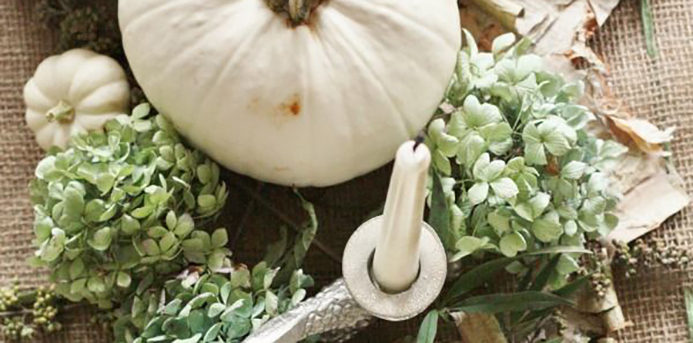Once the goons and goblins stop ringing your doorbell, any and all Halloween décor just seems so frightful.
To bridge the gap with style and budget in mind (and the best nature has to offer), we asked landscape architect Craig Bergmann, owner of Craig Bergmann Landscape Design and interior designer Paul Klug of Paul Klug Inc. for their best ideas for extending autumnal décor through Thanksgiving, both inside and out.
1. Pair the season’s natural color palette of golds, rusts, browns and ochers with bright purples, pinks and lavenders for a heightened color effect. Use late flowering asters and mums, especially some of the new varieties of Dendrathemum such as Samba, Ryan’s Pink and Rhumba.
2. Pink is a wonderful transition color to the holidays when red becomes more dominant. Both hues offer the highest contrast to the more neutral, dormant winter landscape colors.
3. When picking pumpkins, look for odd, unorthodox colors like ivory, celadon and bisque that have a much longer aesthetic life than the standard orange so prominently association with Halloween. The pumpkin form is naturally elegant and offers timeless appeal even beyond Thanksgiving.
4. Bring the garden inside by using celadon pumpkins on the server or placing a potted boxwood next to an unlit fireplace. Fill your treasured containers—antique or contemporary—with apples and pinecones for a seasonal centerpiece.
5. Treasure the last gifts of your garden with atypical arrangements, getting creative with the containers you choose. A few of their recent favorites included a single head of bok choy in a translucent milk white vase; hot pink daisy mums en masse with burgundy-hued hydrangea blossoms in an ivory porcelain gilt container; and purple Beautybush branches arranged with sprigs of bronze fennel on a red lacquer tray.
6. Take the generic out of your store-bought flowers and customize them with cuttings from your own garden. You’ll end up with a much more gratifying and creative arrangement. It’s also a wonderful way to display natural treasures like pebbles and bark found on a woodland walk or beachside stroll.
7. Too often we leave the brilliance of autumn outside as we retreat indoors. Look for ways to capture the colors and textures of the season, whether it’s collecting branches with colored leaves or the last November rose blossom.
8. Much of what fall has to offer has lasting appeal well into the winter. Fall-cut Red Oak leafed branches preserve their rich russet tone. Bare Crab apple branches with red berries add timeless architecture and texture to a simple white vase.
9. If you’re stumped on how to achieve the perfect arrangement, try one of these techniques:
- Follow the French floral design technique of picking three colors and duplicating each with a different flower type and form (e.g., two pinks, two blues and two purples). This establishes your color scheme while adding variety and dimension.
- Stick with in-season monotones. Last month it was mounded moss green hydrangeas with Granny Smith apples; this month pair brown hydrangeas with Bosc pears. Remember, simple elegance can allude to abundance and profusion.
- Or heed the English tradition of adding three greens for every flower producing a wild exuberant bouquet. This is a perfect technique for autumn, using greens and branches highlighted with mums, like the last of the fuchsia in the pot you’re about to throw out, or the final fall roses and rose hips.
Photo caption: Featuring the finest the season has to offer, this centerpiece was created for The Garden Conservancy Preservation Weekend symposium held September 27-30. Bergmann and Klug’s garden was one of four chosen, including the Lurie Garden at Millennium Park; Crab Tree Farms; and Mettawa Manor.

